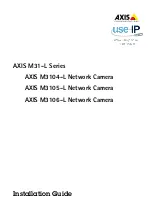
76
•
Appendix B: GPIO Control
1
4
0.00000024
0.00786
127
83,333
2
16
0.00000096
0.03146
32
20,833
3
256
0.00001536
0.50332
2.0
1,302
•
The “Min. Frequency” is a fixed minimum, otherwise the incoming signal period
counter gets saturated (reach the maximum count).
•
The “Max. Freq.” is a recommended maximum to get Error less than 1%.
Multiplicator
The multiplier applied to the input frequency. The possible values are:
•
Frequency is multiplied by 256 (PLC_rsI0_Multiplier = FrequencyX256)
•
Frequency is multiplied by 16 (PLC_rsI0_Multiplier = FrequencyX16)
•
Frequency is multiplied by 4096 (PLC_rsI0_Multiplier = FrequencyX4096)
Divider
The divider applied to the input frequency. The resulting frequency is computed as follows:
divider
tor
multiplica
frequencyx
input
frequency
output
_
_
=
Input Selection
Indicates which label in the GPIO LUT will be associated with the rescaler. Make sure you
select an input label that is not being used for its default behavior. For example, Q9 is used
to send a trigger to pulse generator 0. If pulse generator 0 is used in triggered mode, then
it will be triggered by Q9 and cannot be used as the input for the rescaler. The possible
values are: Q3, Q7, Q8, Q9, Q10, Q11, Q16, and Q17.
Backup Enabled
Indicates that the rescaler will use a back-up input source if its main source stops its
activity.
Backup Window
Specifies the window of time during which there can be no activity from the main input
source before the rescaler switches to the back-up source. As soon as activity is detected,
the rescaler returns to its main input source.
Backup Input
Same as the main input source
Granularity
Indicates the number of PCI clock cycles that are used for each increment of the delay and
width. The amount specified in the granularity is multiplied by 30 nanoseconds.
Other Rescaler equations are:
•
Granularity_setting = [1, 4, 16, 256]
•
Multiplier_setting = [16, 256, 4096]
•
Divider_setting [15:0] = [0..65535]
•
Granularity = 30ns x Granularity_setting
















































